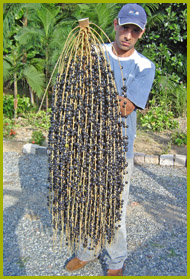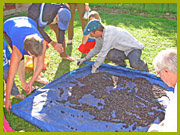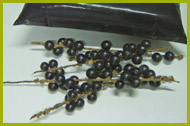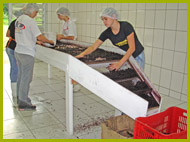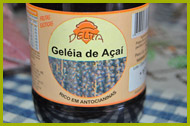|
|
|
|
|
|
Uses
|
|
|
|
|
|
E. edulis is, in the Atlantic Forest, an important food source for wildlife that demand its fruits during the 6 months they mature and their seeds, green fruits and seedlings for the rest of the year (REIS & KAGEYAMA 2000).
|
|
|
|
|
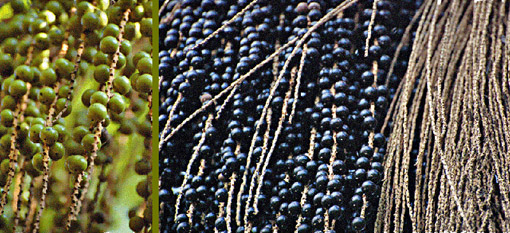
|
|
|
|
|
Green unripe fruits of E. edulis (left), ripe black fruits (middle) and infructescence from which the fruits are already fallen or been cropped (right)
|
|
|
|
Use of the fruits
|
|
|
|
The fruits exert a strong attraction on birds, rodents and mammals and seeds can be used in animal feed. The paring of the fruit provides an ink for dyeing of drapery and currently the fruit juice exhibited a great potential (MAC FADDEN 2005) . It has organoleptic qualities similar to the açaí juice, and in South and
Southeast Brazil
it has been used for ice cream and soft drinks. 4 kg of fruits can produce 2 kg of fruit concentrate, enough to produce 5 litres of juice. The taste and texture of the fruit juçara and açaí are very similar, rich in carbohydrates, protein, iron, fibres and unsaturated fats. Another interesting product is the oil of the seed, which in the case of açaí is used for the production of various cosmetics. In addition, the peeled, undyed or coulored seeds of this palm species are used in
Brazil
for the manufacture of jewelry
|
|
|
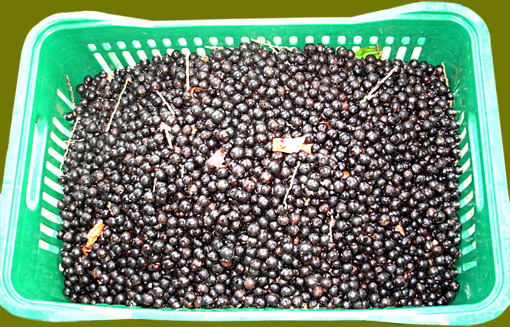 |
|
|
|
|
In plantations the reproductive process begins around the age of six years. Fructification is in general abundant. Under favourable conditions a plant can produce 216 to 528 bunches per hectare and form 6 to 8 kg of fruits per year, equivalent to 8,000 and 10,000 seeds or an average of 5 kg (CK AGRÍCOLA, s/d). In the weight of its fruits and seeds E. edulis presents great variations, ranging from 1000 to 2000 seeds per kg (FLEIG & RIGO 1998).
|
|
|
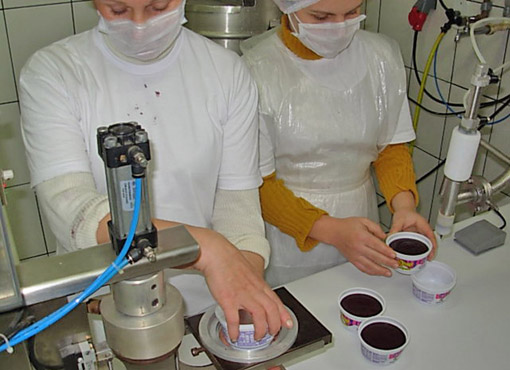 |
|
|
|
Production of fruit pulp Photo - ANDREY PABST
|
|
|
|
|
|
|

